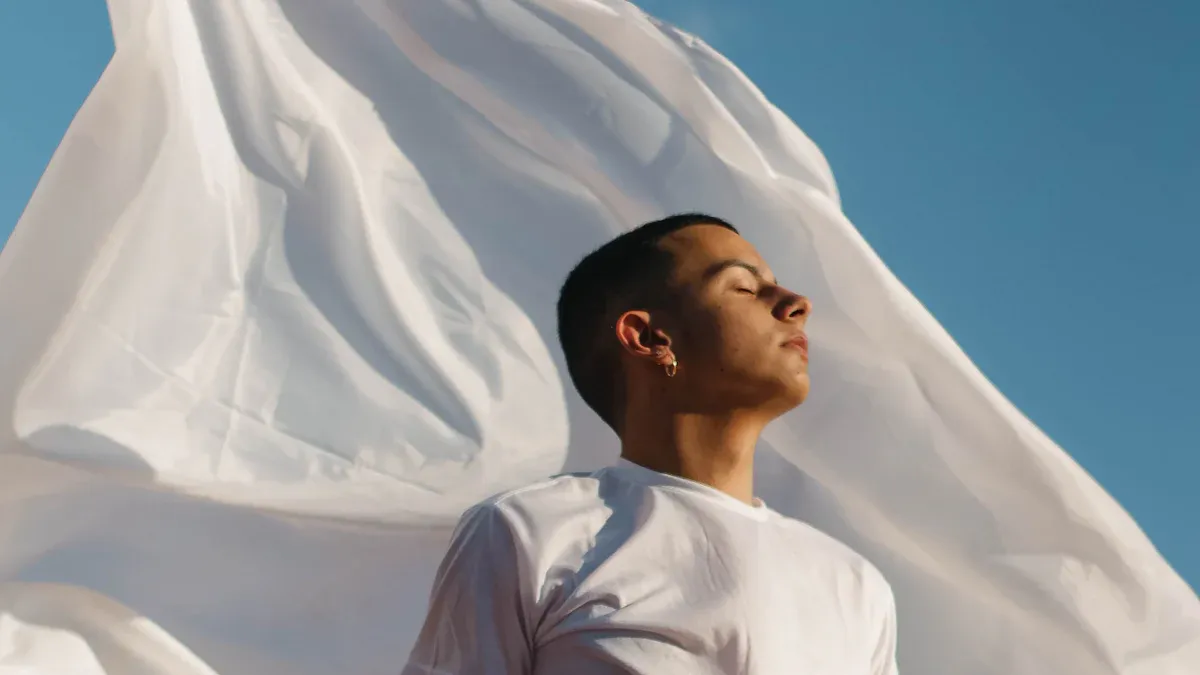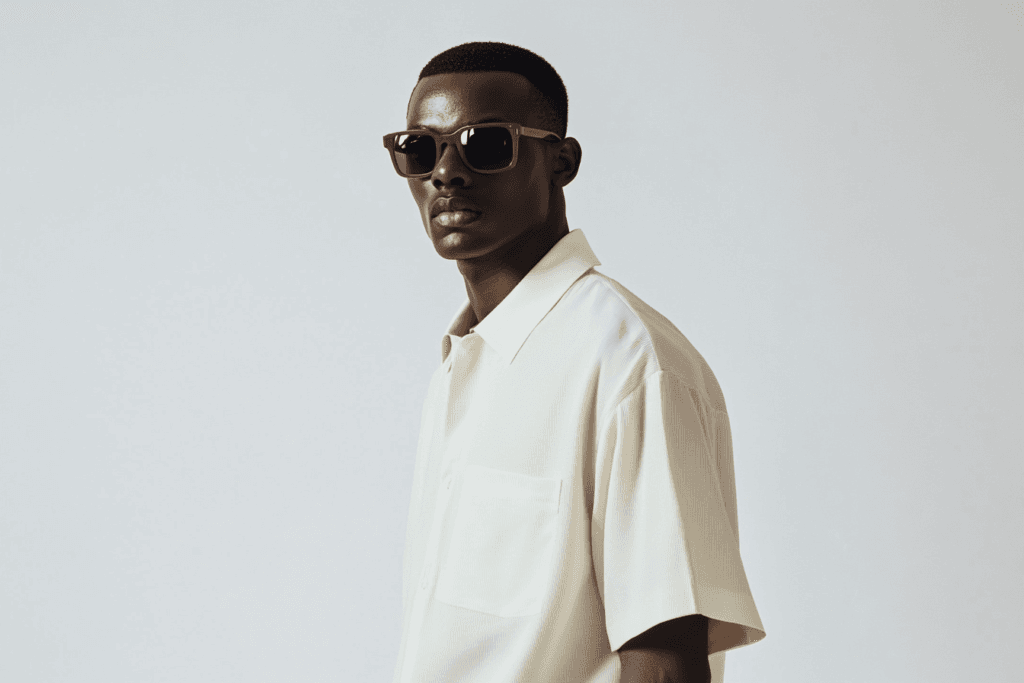
In 2025, selecting the right breathable fabrics has become a critical business decision. Modern consumers demand more than just comfort – they expect materials that deliver peak performance while meeting stringent sustainability standards. This paradigm shift reflects two powerful market forces: eco-conscious purchasing behaviors and tightening global environmental regulations.
The numbers tell the story:
- 68% of apparel buyers now prioritize eco-friendly breathable fabrics (2024 Textile World Report)
- Polyester blends with recycled content show 40% better moisture-wicking than conventional fabrics (ASTM D6701 tests)
- Governments in 12 countries now offer tax incentives for sustainable fabric adoption
Thankfully, material science breakthroughs are answering these demands. Next-gen breathable fabrics successfully merge:
■ Performance: Enhanced airflow and durability metrics
■ Sustainability: Reduced water/energy use in production
■ Compliance: Meeting both consumer expectations and regulatory requirements
Key Takeaways
- Pick eco-friendly fabrics to help the environment. Choose materials made from organic or recycled sources to meet green demands.
- Think about smart fabrics with cool technology. These fabrics improve safety and performance, perfect for sports or outdoor use.
- Look for strong and long-lasting fabrics. Pick ones that don’t wear out easily and stay breathable over time.
- Check for features like keeping sweat away and blocking UV rays. These make fabrics comfy and safe for many uses.
- Learn about what’s popular and what people like. Knowing this will help you choose the right fabrics smartly.
What Are the Key Trends Driving Breathable Fabrics in 2025?
Sustainability and Eco-Friendly Innovations
Sustainability continues to dominate the textile industry in 2025. You’ll notice a growing preference for breathable fabrics made from organic and recycled materials. Manufacturers are adopting eco-friendly production methods to reduce water usage and carbon emissions. For example, some companies now use closed-loop systems to recycle water during fabric dyeing processes. These innovations not only minimize environmental impact but also meet the rising demand for sustainable products.
The market for sustainable breathable fabrics is expanding rapidly. According to recent reports, the industry’s market size is projected to grow significantly between 2021 and 2033. Revenue generation for eco-friendly fabrics is also increasing across various regions, with the Asia-Pacific region leading the way due to lifestyle changes and heightened health awareness. As a wholesale buyer, you should consider these trends when selecting fabrics that align with consumer values.
Smart Textiles and Advanced Technology
Smart textiles are revolutionizing breathable fabrics by integrating advanced technology. These fabrics go beyond comfort and functionality. They actively enhance performance and safety. For instance, some smart fabrics can measure biometric data like muscle activity and hydration levels, making them ideal for athletes. Others adapt to temperature changes, helping you stay comfortable in varying conditions without layering.
The technology behind smart textiles includes features like GPS integration, data emitters, and fibers that function as batteries. These innovations improve safety during outdoor activities and extend the lifespan of the fabric. Longer-lasting materials reduce textile waste, making smart textiles a sustainable choice. If you’re exploring wholesale options, consider how these advanced features can meet the needs of tech-savvy consumers.
Luxury and High-Performance Fabrics
High-performance breathable fabrics are setting new standards in quality and functionality. These fabrics combine durability, flexibility, and resistance to extreme conditions. For example, moisture-wicking materials like Gore-Tex are essential for sportswear, while luxury automotive brands use durable yet stylish fabrics like Alcantara. These materials not only perform well but also add a touch of sophistication.
The luxury fabric market is shifting toward comfort and sustainability. Consumers now prefer natural and renewable materials over synthetic ones. Older generations, in particular, value high-quality fabrics that enhance the aesthetic appeal of their homes and wardrobes. As a wholesale buyer, you should focus on fabrics that balance performance, style, and eco-friendliness to cater to this growing demand.

How Do Breathable Fabrics Actually Work? The Science Explained
Airflow and Moisture-Wicking Properties
Airflow and moisture-wicking properties are essential for breathable fabrics. These features ensure comfort by allowing air to circulate and moisture to evaporate. When you wear fabrics with good airflow, your body stays cool even in hot or humid conditions. Moisture-wicking materials pull sweat away from your skin, keeping you dry and preventing discomfort.
Studies show that different fabric types offer unique benefits and limitations when it comes to moisture-wicking. Here’s a comparison:
| Advantages | Limitations |
|---|---|
| Rapid drying performance prevents wet clinginess during workouts or in humid climates | Visible sweat stains on darker synthetic blends even as moisture itself vanishes |
| Cooling effect and sweat dispersion regulate body temperature better for outdoor activities or hot offices | Rubbing from seams or packs can compromise specialty textile finishes over time |
| Odor prevention since less absorbed moisture means fewer food sources for bacteria | Lingering bacteria or body oils may still cause eventual odors without washing |
| Lightweight feel and improved range of motion from moisture-wicking knit structures | Delicate construction means a shorter lifespan for some ultra-high-tech, moisture-wicking pieces |
When selecting breathable fabrics, look for materials like polyester blends or merino wool. These fabrics excel in moisture management and airflow, making them ideal for activewear and outdoor clothing.
Durability and Longevity
Durability plays a key role in the functionality of breathable fabrics. You want fabrics that can withstand regular use without losing their performance. High-quality materials resist wear and tear, ensuring they last longer and maintain their breathable properties.
The durability of a fabric often depends on its construction and fiber composition. For example, tightly woven fabrics tend to be more resistant to abrasion. Some advanced textiles also include coatings or treatments that enhance their strength. However, these treatments should not compromise the fabric’s breathability.
Waterproof breathable fabrics, like those used in outdoor gear, are measured by their hydrostatic pressure. A fabric is considered waterproof if it has a water column measurement of at least 5,000 mm. This measurement ensures the fabric can handle heavy rain while remaining breathable. Choosing durable fabrics not only saves money but also reduces waste, aligning with sustainable practices.
UV Protection and Temperature Control
Breathable fabrics with UV protection and temperature control offer added functionality. These features shield your skin from harmful UV rays and help regulate your body temperature. Fabrics with built-in UV protection are especially useful for outdoor activities, where prolonged sun exposure can cause skin damage.
Temperature control is another critical feature. Some fabrics adapt to changing conditions by trapping heat when it’s cold and releasing it when it’s warm. This adaptability keeps you comfortable in various environments. For example, smart textiles with phase-change materials can adjust to your body temperature, providing optimal comfort.
When evaluating breathable fabrics, consider their ability to balance UV protection and temperature regulation. These features enhance the fabric’s versatility, making it suitable for a wide range of applications, from sportswear to casual clothing.

What Should Wholesale Buyers Look for in Breathable Fabrics?
Fiber Composition and Material Selection
The fiber composition of a fabric directly impacts its performance, durability, and breathability. As a wholesale buyer, you should prioritize materials that align with your target market’s needs. For example, natural fibers like cotton and wool offer excellent breathability and comfort, while synthetic fibers like polyester provide durability and moisture-wicking properties. Blended fabrics often combine the best of both worlds, offering enhanced functionality.
When evaluating fiber composition, consider key performance metrics:
| Metric | Importance in Fabric Selection |
|---|---|
| Tensile Strength | Indicates the maximum stress a fabric can withstand before failure, directly influenced by fiber type. |
| Abrasion Resistance | Measures the fabric’s ability to resist wear and tear, which varies with fiber composition. |
| Dimensional Stability | Assesses how well a fabric maintains its shape and size under various conditions, affected by the fibers used. |
Selecting the right fiber composition ensures that your breathable fabrics meet consumer expectations for quality and performance.
Weave Types for Enhanced Breathability
The weave type of a fabric plays a crucial role in determining its breathability. Open weaves, such as plain or basket weaves, allow better airflow, making them ideal for hot climates or activewear. On the other hand, tighter weaves provide more durability and protection but may compromise breathability.
Research studies highlight the relationship between weave structure and air permeability:
| Study | Focus Area | Findings |
|---|---|---|
| Havlová (2013) | Air permeability and constructional parameters | Examines the relationship between fabric structure and air permeability. |
| Umair et al. (2016) | Structure of woven fabric | Investigates how weave structure affects air permeability and moisture management. |
| Zhu et al. (2018) | Structural parameters and air permeability | Predicts how structural parameters correlate with air permeability in cotton fabrics. |
| Marie (2018) | Air and water vapor permeability | Analyzes the impact of structural parameters on breathability and comfort properties. |
Understanding these findings can help you choose fabrics with the right weave type to meet specific market demands.
Market Demand and Consumer Preferences
Consumer preferences and market demand should guide your fabric selection. The breathable fabrics market is projected to grow significantly, with a market size value of $2.18 billion in 2025 and a revenue forecast of $3.53 billion by 2034. This growth reflects a compound annual growth rate (CAGR) of 12.8% from 2025 to 2034.
Key factors influencing demand include:
| Factor Influencing Demand | Description |
|---|---|
| Increase in Sportswear Usage | Growing preference for lightweight, flexible, and durable sportswear that enhances performance and comfort. |
| Demand in Medical Textiles | Breathable materials are essential in medical applications to prevent liquid accumulation on the skin. |
| Rising Fitness Awareness | Increased interest in physical activities among youngsters, leading to higher demand for breathable fabrics. |
| Need for Comfortable Apparel | Shift towards sustainable and high-performance clothing, driving demand for breathable textiles. |
| Utilization in Protective Gear | Increased use of breathable textiles in military and law enforcement uniforms. |
| Eco-friendly Innovations | Growing preference for environmentally sustainable breathable textiles suitable for sensitive skin. |
By staying informed about these trends, you can make strategic decisions that align with consumer needs and market opportunities.

How to Choose & Care for Breathable Fabrics Like a Pro?
Evaluating Fabric Quality and Performance
When selecting breathable fabrics, you should focus on quality and performance. Start by evaluating the fabric’s breathability. This measures how well a fabric absorbs and releases moisture, allowing it to “breathe.” You can use methods like the upright cup test or Ret to assess this. Water repellency is another crucial factor. It determines if the fabric resists surface wetting, following ISO 4920 standards. Additionally, consider the fabric’s ability to resist microbial growth, which is vital for hygiene. Lastly, check the Ultraviolet Protection Factor (UPF) to ensure the fabric effectively blocks UV radiation.
Best Practices for Storage and Care
Proper storage and care extend the life of your breathable fabrics. Use breathable storage options to prevent moisture buildup and odors. Always clean garments before storing them to avoid damage from sweat or oils. Maintain a suitable environment with breathable materials to protect delicate fabrics. Properly fold and arrange items to maintain their structure and prevent creasing. Avoid vacuum-sealing unless necessary, as it can damage delicate fabrics. These practices help preserve the quality and functionality of your fabrics.
Partnering with Trusted Suppliers
Partnering with trusted suppliers ensures you receive high-quality breathable fabrics. Look for suppliers who understand the importance of air permeability. The density of the material, fabric structure, and any chemicals or coatings can affect air flow. High air permeability is essential in applications like sportswear and medical textiles. Testing air permeability is crucial for ensuring product quality and performance. By choosing reliable suppliers, you can meet consumer expectations and maintain a competitive edge in the market.

Conclusion
Breathable fabrics play a vital role in addressing the evolving demands of 2025. The rising interest in functional clothing, outdoor activities, and sustainable materials underscores their importance. For instance, the waterproof breathable textiles market is expected to surpass $2.5 billion by 2025, driven by advancements in textile technology and eco-friendly innovations. Balancing market trends with functionality and sustainability ensures these fabrics meet diverse consumer needs. Whether you prioritize durability, comfort, or environmental impact, selecting the right fabrics can position your business for success. Make thoughtful choices to align with future-focused market opportunities.
FAQ
What makes a fabric breathable?
Breathable fabrics allow air to pass through while managing moisture. This helps regulate body temperature and keeps you comfortable. Materials like cotton, polyester blends, and merino wool are popular choices due to their airflow and moisture-wicking properties.
What are the best uses for breathable fabrics?
Breathable fabrics work well for activewear, outdoor clothing, and medical textiles. They are ideal for sports, fitness, and environments requiring comfort and moisture control. Their versatility also makes them suitable for casual wear and protective gear.
What should you check when buying breathable fabrics wholesale?
Focus on fiber composition, weave type, and performance features like moisture-wicking and UV protection. Evaluate the fabric’s durability and ensure it aligns with market trends. Partnering with reliable suppliers ensures consistent quality.
What is the difference between natural and synthetic breathable fabrics?
Natural fabrics like cotton and wool offer softness and comfort. Synthetic options like polyester provide durability and advanced features like moisture-wicking. Blended fabrics combine the benefits of both, offering enhanced functionality.
What care tips help maintain breathable fabrics?
Wash breathable fabrics with mild detergents and avoid high heat. Store them in breathable containers to prevent moisture buildup. Proper care extends their lifespan and preserves their performance features.
Related
1.Polyester Breathable Fabric Marke →
2.Sustainable fabric market analysis →
3.Waterproof Breathable Fabric Market Size & Share Analysis →
4.Waterproof Breathable Fabric Market Report 2025 →
5.Smart Fabrics and Wearable Tech →
